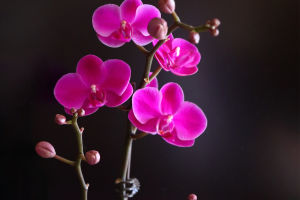Speaking of Africa, we believe all of us must be familiar with it, the vast and beautiful African savannah, and the animal migration. And in this land, there is a magical tree that is rarely known, and that is the baobab tree.
1. The origin of the name Baobab
The baobab tree, also known as the boba tree, grows in tropical regions south of the Sahara Desert in Africa. Like the Populus euphratica forest in the desert, is very tenacious. A baobab is a large deciduous tree with a variety of crown shapes.
Its fruits are huge, each as big as a football. The fruit is sweet and delicious and is a food source for many local mammals. It is the favorite delicacy of monkeys, elephants, orangutans, and other animals.
When the fruit is ripe, many monkeys come in groups, climb up the thick trunk, pick and enjoy the delicious fruit, and the name "Baobab Tree" comes from this.
The baobab tree is very large and grows amazingly. The longest diameter can exceed ten meters, and the longest tree age can reach five thousand years.
Its whole body is full of treasures, which can be called the "National Treasure Tree". The leaves and fruit are edible, the seeds can be used to extract oil, and even its bark can be used to weave clothes.
2. One tree feeds a family
The baobab bears fruit three times a year, and the fruit can reach a length of 25 centimeters. Knock to open its hard shell, the pulp looks like dry bread wrapped in thick flour, the shape is long and oval, it can be eaten raw, and the taste is sweet and sour.
However, because of its high starch content, it is generally not eaten raw, but steamed and baked. When the fruit is baked, the color of the pulp is slightly yellow, exuding an attractive aroma, the pulp is softer and more delicious, and the taste is not inferior to that of bread.
We know that the calcium content of spinach is very high in vegetables, and the calcium content of baobab is 1.5 times that of spinach, which has a strong antioxidant effect.
The content of vitamins is more than three times that of oranges, which is higher than that of most fruits in nature. Therefore, the baobab fruit is regarded as a "super fruit" by the local people.
The content of vitamins and calcium in the leaves of the baobab tree is also extremely high. Pick off the leaves and boil them into your favorite vegetable soup. The nutritional value is also high and the taste is delicious. Not only can it be eaten, but also has medicinal value for reducing fever.
The people here gather the seeds of the baobab tree to press oil. Or after roasting and grinding, it can be made into a beverage that can be brewed like coffee.
Nutshells, through the hands of skilled carpenters, can be made into containers and used as water ladles or cups. The bark also contains a lot of water. After peeling off and drying, it can be twisted into rope or woven into clothes.
Africa is arid all year round, and many areas are severely desertified with little vegetation coverage. When the dry season comes, the annual rainfall is also very low. At this time, the baobab tree has a very powerful function, which is a natural water storage container.
Although the baobab tree grows in a harsh environment, it can store a lot of water. Whenever the rainy season comes, the local residents will dig a big hole in the trunk and install a water intake device at the hole, and then they can get water at any time, which is very convenient.
It can be seen that with such a magical tree, you can make the best use of it. Almost zero-cost artificial input is all nourished by nature and the land.


